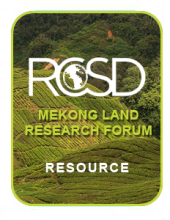Land Library Search
Through our robust search engine, you can search for any item of the over 73,000 highly curated resources in the Land Library.
If you would like to find an overview of what is possible, feel free to peruse the Search Guide.
/ library resources
Showing items 1 through 9 of 57.This paper explores the global prevalence of an emerging phenomenon: the coexistence of a stunted child and an overweight mother in the same household. It also tests whether this phenomenon is associated with a country's level of economic development and urbanization.
This shadow report, produced by NEWA and EWLA, offers a critique of the Ethiopian government's CEDAW report by looking at three broad areas: economic and socio-cultural status of women, equality in marriage and family relations and violence against women.
Contents: Welcome And Introduction; Opening of the Workshop; Policies for Improved Land Management in Uganda: Project Objectives, Activities, and Opportunities; Summary of Main Themes and Key Findings; Development Pathways and Land Management in Uganda: Causes and Implications; A Spatially Based
This report identifies the links among economic growth, poverty alleviation, and natural resource degradation in Brazil.
"This paper reports results of incorporating fish into IMPACT, a global model of food supply and demand that estimates market-clearing prices to 2020 for 32 commodities in 36 regions.
Corresponding to the characteristics of multi-discipline and multi-level management, land administration always requires and acquires spatial data at very different spatial and thematic resolution.
Future demand projections reported in this paper indicate a steady increase in demand for outdoor recreational opportunities in U.S. regions where BLM lands are located. From a supply perspective, BLM lands represent "prime targets" for meeting increased recreational demand in the western U.S.
Land values calculated with the current North Dakota agricultural land valuation model were compared with values calculated by capitalizing the average cash rent for each county.
This publication is a snapshot of the Minnesota Farm Real Estate Sales web site (http://www.apec.umn.edu/faculty/sjtaff/salesstudy) as of May 5, 2002.







